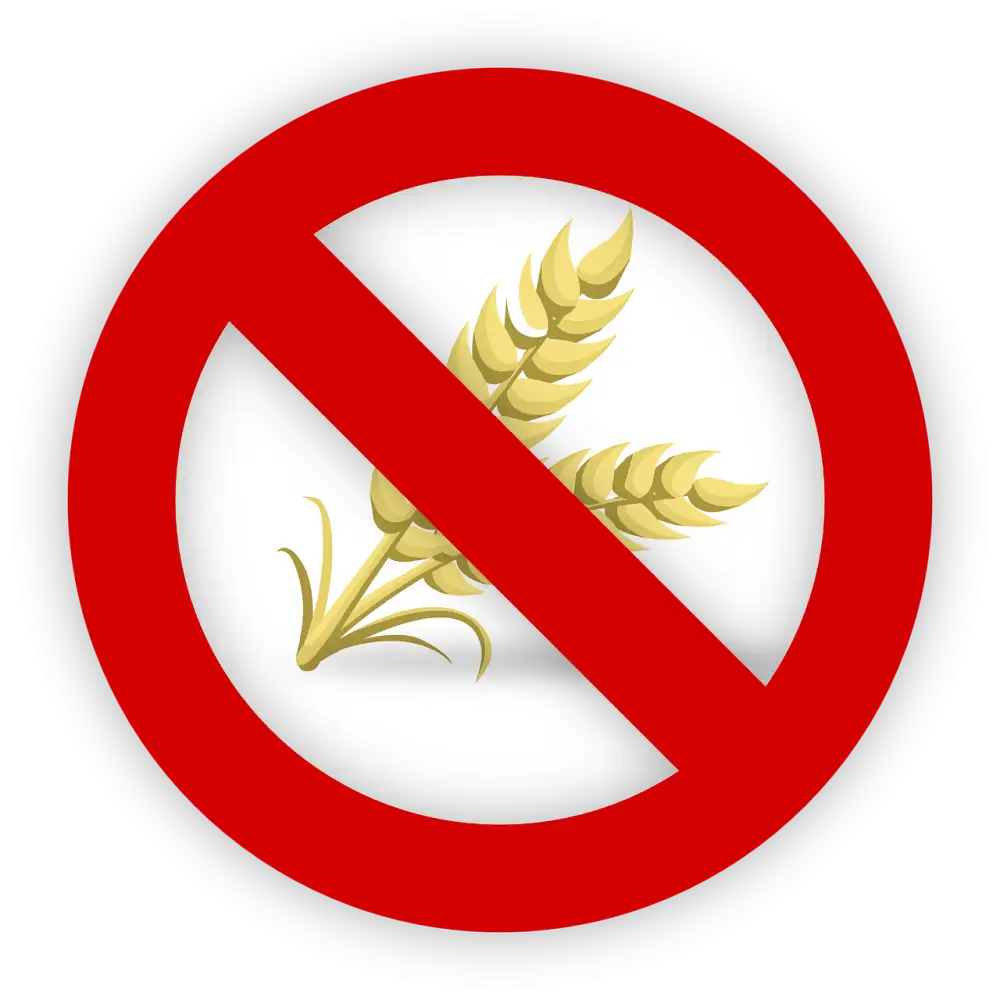Unleash the Power of Gluten-Free Flour: A Healthier Alternative for Your Baking Needs

- Understanding Gluten and its Effects on Health
- What is Gluten-Free Flour?
- Benefits of Using Gluten-Free Flour
- Types of Gluten-Free Flour Available
- How to Use Gluten-Free Flour in Cooking and Baking
- Tips for Substituting Gluten-Free Flour in Recipes
- Common Misconceptions about Gluten-Free Flour
- Potential Challenges and Solutions when Using Gluten-Free Flour
In recent years, there has been a growing interest in gluten-free diets and alternatives to traditional wheat flour. For those with celiac disease or gluten sensitivity, avoiding gluten is essential for maintaining good health. However, even for those without these conditions, incorporating gluten-free flour into their diet can offer numerous benefits. In this article, we will explore the world of gluten-free flour and discover how it can be a healthier alternative for all your baking needs. So let's dive in and unleash the power of gluten-free flour!
Understanding Gluten and its Effects on Health
Gluten is a protein found in wheat, barley, and rye. For some individuals, consuming gluten can lead to adverse health effects. One common condition associated with gluten consumption is celiac disease, an autoimmune disorder that damages the small intestine. This can result in nutrient deficiencies and various digestive issues. Additionally, non-celiac gluten sensitivity affects many people who experience similar symptoms but do not have celiac disease. These individuals may also benefit from avoiding gluten in their diet. Understanding the effects of gluten on health is crucial in making informed decisions about dietary choices.
What is Gluten-Free Flour?
Gluten-free flour is a type of flour that does not contain gluten, a protein found in wheat, barley, and rye. It is specially designed for individuals with gluten intolerance or those who choose to follow a gluten-free diet. Gluten-free flours are typically made from alternative grains such as rice, corn, quinoa, or buckwheat. These flours provide a suitable substitute for traditional wheat flour in various recipes while offering a healthier alternative for those seeking to avoid gluten.
Benefits of Using Gluten-Free Flour
Using gluten-free flour in your cooking and baking can offer a range of benefits. Firstly, it is a healthier alternative for those with gluten sensitivities or celiac disease. By eliminating gluten from your diet, you can reduce inflammation, improve digestion, and alleviate symptoms such as bloating and fatigue.
Moreover, gluten-free flour is often higher in fiber and nutrients compared to traditional wheat flour. It contains essential vitamins and minerals like iron, calcium, and B vitamins that are vital for overall health. Additionally, it can help maintain stable blood sugar levels due to its lower glycemic index.
Furthermore, using gluten-free flour opens up a world of culinary possibilities. You can experiment with different flavors and textures while still achieving delicious results. Whether you're making breads, cakes, or pastries, gluten-free flour can provide a lighter and fluffier texture without compromising on taste.
Overall, incorporating gluten-free flour into your recipes not only promotes better health but also allows you to explore new culinary horizons. So why not give it a try and experience the numerous benefits firsthand?
Types of Gluten-Free Flour Available
There are several types of gluten-free flour available on the market today, each with its own unique properties and benefits. Some popular options include almond flour, coconut flour, rice flour, tapioca flour, and sorghum flour. Almond flour is made from ground almonds and adds a rich, nutty flavor to baked goods. Coconut flour is made from dried coconut meat and has a light texture and subtle sweetness. Rice flour is made from finely milled rice grains and is versatile for both sweet and savory recipes. Tapioca flour comes from the cassava root and helps add structure to gluten-free baked goods. Sorghum flour is derived from a grain called sorghum and has a mild taste that works well in breads and muffins. Experimenting with different gluten-free flours can help you find the perfect one for your specific baking needs.
How to Use Gluten-Free Flour in Cooking and Baking
When it comes to using gluten-free flour in cooking and baking, there are a few important things to keep in mind. Firstly, it's crucial to understand that gluten-free flours have different properties than traditional wheat flour. They tend to be denser and absorb more moisture, so recipes may need to be adjusted accordingly.
One key tip is to blend different types of gluten-free flours together for better results. Combining flours like rice flour, almond flour, and tapioca flour can create a more balanced texture and flavor. Experimenting with different ratios will help you find the perfect blend for your recipes.
Another helpful technique is adding binders such as xanthan gum or guar gum to mimic the elasticity that gluten provides. These binders help prevent crumbling and improve the overall structure of baked goods.
It's also essential to give gluten-free batters and doughs enough time to rest before baking. This allows the flours to fully hydrate and results in a better texture. Additionally, using slightly higher oven temperatures can help with browning and achieving a crispy crust.
Lastly, don't be afraid to get creative with your recipes! Gluten-free flours can add unique flavors and textures to your dishes. Try incorporating them into pancakes, cookies, breads, or even savory dishes like pizza crusts or fried coatings.
Remember that practice makes perfect when working with gluten-free flours. Don't get discouraged if your first attempts don't turn out exactly as expected. With time and experimentation, you'll become more comfortable using gluten-free flour in your cooking and baking endeavors.
Tips for Substituting Gluten-Free Flour in Recipes
When substituting gluten-free flour in recipes, it's important to keep a few tips in mind. Firstly, it's crucial to understand that gluten-free flours have different properties than traditional wheat flour. They may absorb more moisture or require additional binding agents.
To ensure successful results, try using a blend of gluten-free flours rather than relying on just one type. This can help mimic the texture and taste of regular flour. Experiment with combinations like rice flour, almond flour, tapioca starch, and potato starch.
Additionally, consider adding xanthan gum or guar gum to your recipes. These natural thickeners help improve the elasticity and structure of baked goods made with gluten-free flour.
Remember to adjust the liquid content in your recipes as well. Gluten-free flours often require more liquid to prevent dryness. Increase the amount gradually until you achieve the desired consistency.
Lastly, be patient and don't get discouraged if your first attempts don't turn out perfectly. Baking with gluten-free flour can be a learning process. Keep experimenting and adapting recipes until you find what works best for you.
By following these tips, you can confidently substitute gluten-free flour in your favorite recipes while still enjoying delicious and satisfying results.
Common Misconceptions about Gluten-Free Flour
There are several misconceptions surrounding gluten-free flour that need to be addressed. One common misconception is that gluten-free flour is tasteless and produces dry and crumbly baked goods. However, with the right combination of ingredients and proper techniques, gluten-free flour can yield moist and delicious results.
Another misconception is that gluten-free flour is difficult to work with and requires complicated adjustments in recipes. While it does require some experimentation and understanding of its unique properties, there are numerous resources available to help guide you through the process. With practice, you can achieve excellent results using gluten-free flour in your favorite recipes.
Some people also believe that gluten-free flour is only suitable for those with celiac disease or gluten intolerance. However, many individuals without these conditions choose to incorporate gluten-free alternatives into their diet for various reasons, such as improving digestion or reducing inflammation. Gluten-free flour can be a healthy option for anyone looking to diversify their baking repertoire.
Lastly, there is a misconception that all gluten-free flours are created equal. In reality, there are various types of gluten-free flours available on the market, each with its own unique characteristics and flavor profiles. It's important to experiment with different types of gluten-free flours to find the ones that best suit your specific needs and preferences.
By dispelling these misconceptions about gluten-free flour, we can encourage more people to embrace this healthier alternative in their cooking and baking endeavors.
Potential Challenges and Solutions when Using Gluten-Free Flour
Using gluten-free flour can present some challenges in cooking and baking. One common issue is that gluten-free flours tend to be denser and have less elasticity than traditional wheat flour. This can result in baked goods that are dry, crumbly, or have a gummy texture.
To overcome these challenges, it is important to use a combination of different gluten-free flours to mimic the texture of wheat flour. Blending flours like rice flour, almond flour, and tapioca flour can help achieve better results. Adding xanthan gum or guar gum can also improve the texture and structure of baked goods.
Another challenge is that gluten-free flours often absorb more liquid than regular flour. This means that recipes may need adjustments in terms of the amount of liquid used. It's important to gradually add liquid until the desired consistency is achieved.
Lastly, gluten-free flours may require longer baking times or lower temperatures compared to traditional recipes. It's essential to keep an eye on your baked goods and adjust accordingly to prevent over-browning or undercooking.
By being aware of these potential challenges and implementing the necessary solutions, you can successfully navigate the world of gluten-free baking and enjoy delicious treats without compromising on taste or texture.
In conclusion, embracing the health benefits of gluten-free flour is a wise choice for those seeking a healthier alternative for their baking needs. By understanding the effects of gluten on our health and exploring the various types of gluten-free flours available, we can unleash the power of this versatile ingredient. With its numerous benefits and the ability to create delicious and nutritious baked goods, gluten-free flour opens up a world of possibilities in the kitchen. So why not give it a try and experience the wonders of gluten-free baking for yourself? Your taste buds and your body will thank you!
Published: 09. 12. 2023
Category: Health



